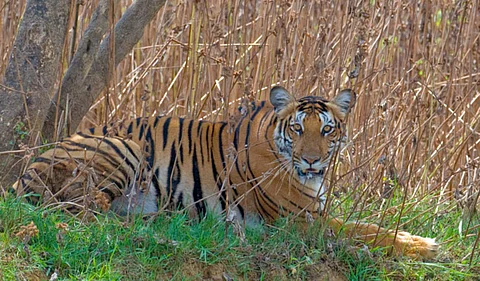

BENGALURU: The tiger census, which is going on in Karnataka since Saturday, is crucial as it will not only indicate the population of the national animal and conservation efforts, but also present an assessment of mega herbivores.
Apart from the tiger numbers this time, the Ministry of Environment, Forests and Climate Change will also release a report on the estimate of elephant and for the first time of Indian gaur (bison) populations. Herbivores, especially gaurs, play a crucial role in tiger assessment.
A forest department official said that gaurs are a prime prey for tigers and their population estimation gives an indication of the tiger population and vegetation. The forest habitat, vegetation and conservation measures can be assessed by knowing gaur population, he added.
“Three years ago, the population of gaurs was on the rise and healthy herds with aggressive bulls and young calves could be sighted. It was a good sign as sighting a gaur had become a matter of chance till then,” he said.
‘Gaurs are key indicator to vegetation’
“Now, gaur population seems to be stabilising. They are a direct prey base for tigers, just like sambar and spotted deer. Their protection too is crucial. We have been told to make note of gaur sightings along with that of elephants,” a senior forest official said.
The last elephant census was done in 2017 and the tiger census in 2018. Though the tiger census has been taken up this year, elephants have not been counted. This is not because of the pandemic, but the ministry felt that two separate exercises were not needed as it could be done in one census, the official said.
Classification will not be difficult, as the data stored on M-Stripe app has six different forms and columns for formatting and uploading. “The prey base assessment has always been a crucial part of tiger census as it directly indicates the health of the forest and forage area for the key species (tigers).
This is the reason why an assessment of the indicator species is done as it gives an overall view to the planners on what needs to be done and where they lack. Gaurs are a key indicator to the vegetation and habitat. Elephants are crucial as they are not just sensitive to slightest changes in environment but are extremely intelligent. Their regular sightings in one location, migratory path and new locations portray the actual picture of the forest,” official said.